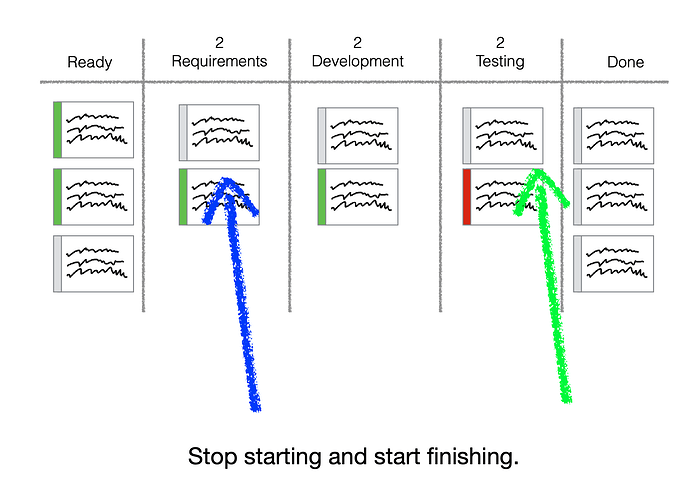I’m the Scrum Master for a team of 6 developers and We can’t get our daily standup down under 30 minute no matter how much we try. It seems to just drag on forever and a bunch of people are complaining that it takes to long. I’ve tried reminding everyone on that we want to only take 15 minutes and I’ve tried to get people to defer conversations that don't need to be part of the standup, but it just takes a long time to cover all the work people have done and identify the blockers they are running into. Does it matter that it takes 30 minutes? Should we just assume that is what our team needs?
What would happen if you time box it and just stop after 15 minutes?
We wouldn’t have a chance to hear from everyone. The ones that go first that are talkative would eat up all the time available and we wouldn’t hear from the people who don’t step up to talk first.
You might try having some type of randomized order so you get to hear the answers to the three questions from different people each day. Would that help push the people who talk to much into giving shorter answers?
I don’t know, but it is worth a try! I’ll let you know what happens.
Well we got through all but two developers in the 15 minutes so I think it helped. But the remaining two developers had things they needed to discuss so we ended up going over anyway. but we still finished in less than 30 minutes. So it was a step in the right direction.
Have you tried a story focused standup instead of people focused?
Whats a story focused standup?
You talk about each story instead of each person.
Many teams find that they can get better team work by using the daily standup to ask how the team can organize their work to complete something that day. So typically you’d start on the right hand side of the board with the story that is closest to being done (green arrow). This should be the story that can start producing a return on investment the soonest. You ask the team to come up with a plan for getting that story done. It doesn’t matter who worked on it yesterday, the goal is to organize everyone around completing that work.
Once you have a plan in place for the right most story, if you still have capacity, you move to the next story and do the same thing with it. Eventually everyone will have a plan for what they are doing that day. You may have other stories still on the board toward the left (blue arrow), but you don’t have to worry about those since you don’t have capacity to do anything on them without neglecting the stories that can start earning a return on investment sooner.
This all falls under the “stop starting and start finishing” mantra because it keeps the team aligned with finishing work instead of starting new work. It can also reduce the amount of time spent in the standup because you’ll probably have multiple people working together to get each ticket over the line to done, so there are fewer stories to talk about than the number of people on the team and the discussions that do happen are going to be more focused on how people should work together instead of listing random things that don’t relate to the rest of the team.
